While it’s impossible to prove, push-ups are probably the most widely performed exercise on the planet. Just about everyone who works out has done push-ups at some time, from raw beginners to elite athletes. People have been doing push-ups for thousands of years; they’re part of fitness history. Long before the barbell bench press was invented, people used push-ups to build muscle, strength, and endurance.
Fast forward to the 21stcentury, and push-ups are still immensely popular, and there are lots of different push-up variations to try.
Some, like kneeling push-ups, are ideal for novices. Others, like one-arm and handstand push-ups, are much more advanced. Whatever level you are currently at, there is a type of push-up for you. Check out these 13 next level push-up variations for mass, strength, and performance.
In this article, we explain how to do knuckle push-ups and reveal the benefits and drawbacks of doing push-ups on your fists.
What Are Knuckle Push-Ups?
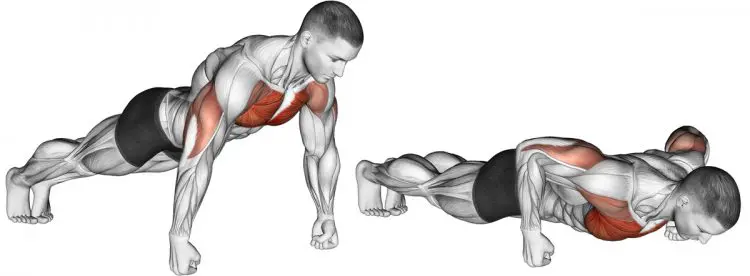
Knuckle push-ups are so-called because, instead of resting on your flat palms, you do your push-ups with your weight resting on your closed fists. This push-up variation is popular with boxers, martial artists, and other fighters as it replicates punching.
Doing push-ups on your knuckles is more challenging than doing regular push-ups, but only slightly. Like regular push-ups, you can make knuckle push-ups easier by bending your legs and resting on your knees or harder by raising your feet. You can wear a weighted vest to make knuckle push-ups more intense.
Level Up Your Fitness: Join our 💪 strong community in Fitness Volt Newsletter. Get daily inspiration, expert-backed workouts, nutrition tips, the latest in strength sports, and the support you need to reach your goals. Subscribe for free!
Knuckle Push-Up Anatomy
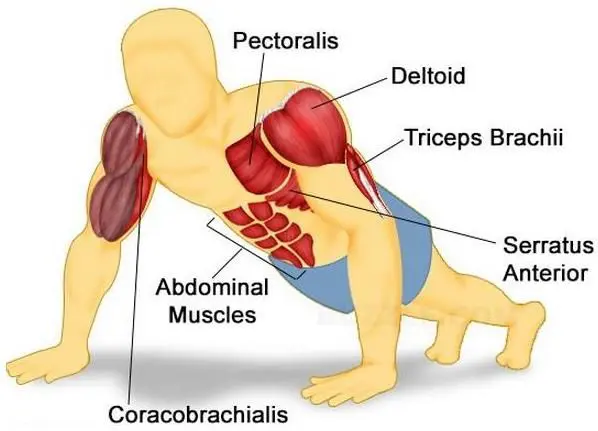
Knuckle push-ups are a compound exercise which means they involve several muscles and joints working together. The main muscles involved in knuckle push-ups are:
Pectoralis major – known as the pecs for short, these are your main chest muscles. Their primary functions are adduction, medial rotation, and horizontal flexion of your shoulder joint.
Anterior deltoids – the front of your three shoulder muscles, the anterior deltoids work with the pecs to flex your shoulder joint.
Triceps brachii – located on the back of your upper arm, the triceps extend your elbow and also extend your shoulder joint.
Core – the collective term for the muscles that make up your midsection, your core keeps your midsection stable during knuckle push-ups and stops your hips from dropping out of alignment.
Forearms – bracing your wrists and balancing on your knuckles increases forearm muscle activation. There are several forearm muscles that affect your wrists, including brachialis, brachioradialis, palmaris longus, and flexor carpi radialis.
How to Do Knuckle Push-Ups
There are two ways to do most exercises; the right way and the wrong way. The right way produces the greatest benefits with the least amount of risk. The wrong way could lead to injury. Get the most from any exercise by always using the best possible technique.
Follow these step-by-step instructions to make sure you’re doing knuckle push-ups correctly.
1 – Make a fist with both hands. Do not tuck your thumb inside your clenched fist. Instead, place it around your first two fingers.
2 – Squat down and place your fists on the floor, roughly shoulder-width apart. Your palms should be turned inward in a neutral position. Make sure your wrists are straight.
3 – Keeping your arms straight, walk your feet back, so your legs and body are straight. Brace your abs and lengthen your neck. Tuck your chin in.
4 – Without dropping your head or hips, bend your arms and lower your chest to within an inch or so of the floor. Keep your upper arms close to your sides and your wrists straight.
5 – Push yourself back up and then repeat.
6 – Make knuckle push-ups more comfortable by resting your hands on an exercise mat or folded towel. Take weight off your arms by bending your legs and resting on your knees. Increase the difficulty by placing your feet on a bench or chair to put more weight on your hands.
Benefits of Knuckle Push-Ups
Still not sure if knuckle push-ups are worth the extra effort? Consider the following benefits and advantages…
Tougher skin on your knuckles – do knuckle push-ups often enough, and the skin on your knuckles will thicken and harden into callouses. Tougher skin on your knuckles may be beneficial for boxers and other fighters. That said, hitting a punchbag will have a similar skin-toughening effect.
Level Up Your Fitness: Join our 💪 strong community in Fitness Volt Newsletter. Get daily inspiration, expert-backed workouts, nutrition tips, the latest in strength sports, and the support you need to reach your goals. Subscribe for free!
Less wrist strain – doing push-ups on flat palms involves a lot of wrist extension. Some people find this uncomfortable and even painful. With knuckle push-ups, your wrists are straight, which may mean less joint strain.
Increased forearm activation – keeping your wrists straight means knuckle push-ups involve more forearm muscle work than regular push-ups. While knuckle push-ups probably won’t result in massive, Popeye-like forearms, you should find that they increase your grip strength and wrist stability.
Increased range of motion – knuckle push-ups increase your range of motion by an inch or so. Taking your elbows and shoulders through a larger range of motion may increase muscle activation. Confirm this for yourself by doing push-ups with one hand clenched and the other hand flat. You’ll soon feel the difference in range of movement.
Knuckle Push-Up Drawbacks
As useful as knuckle push-ups can be, they are not without drawbacks. Consider the following before adding this exercise to your workouts…
Uncomfortable – there is no real padding on your knuckles, so resting all your weight in your closed fists can be very uncomfortable. With repetition, knuckle push-ups should become more tolerable but, initially, at least, they may be quite painful.

Make knuckle push-ups more comfortable by doing them on an exercise mat or a folded towel.
Risk of wrist injury – knuckle push-ups could make your wrists stronger, but they could also lead to injury. If you lose your balance, your wrist could fold under your weight, leading to joint stains or even a fracture.
According to ESPN, NBA forward Kevin Love broke his hand doing knuckle push-ups, so it’s evident that there is an injury risk when doing this exercise (1).
Knuckle Push-Up Alternatives
Not a fan of knuckle push-ups or looking for a way to add more variety to your workouts? Here are three similarly beneficial exercises you can do instead.
Push-ups with handles
Doing push-ups with handles will allow you to mimic knuckle push-ups without resting your weight on closed fists. Your wrists will be straight, and you’ll be able to move through a larger range of motion, but you won’t have all that uncomfortable pressure on your boney knuckles.
No push-up handles? No problem! Use dumbbells instead.
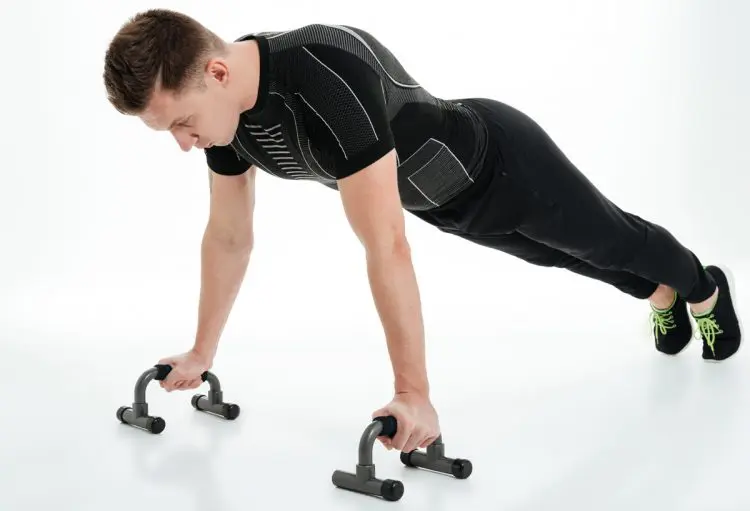
Atlas push-ups
Atlas push-ups are named after Charles Atlas, the self-proclaimed most perfectly developed man. Atlas was famous for his mail-order bodybuilding courses, most of which involved a type of isometric training called Dynamic Tension. However, Atlas also invented this push-up variation.
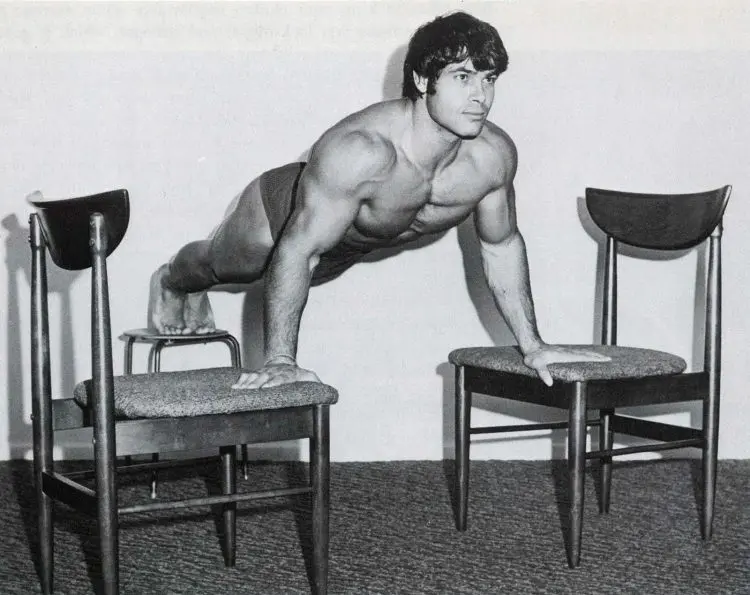
Atlas push-ups, like knuckle push-ups, increase your range of motion.
How to do it:
- Place three benches or chairs in a T-shape. Place your hands on two of the chairs and your feet on the other. Your hands should be roughly shoulder-width apart.
- Bend your arms and lower your chest down between your hands, taking care not to hyperextend your shoulders or your lumbar spine. Keep your body straight.
- Push yourself back up and repeat.
Parallel bar dips
Dips work most of the same muscles as knuckle push-ups but without the pressure on your closed fists. The range of motion is bigger than for regular push-ups and dips put more weight on your arms, too. You should be able to keep your wrists straight when doing dips, making them more wrist joint-friendly than palms flat push-ups.
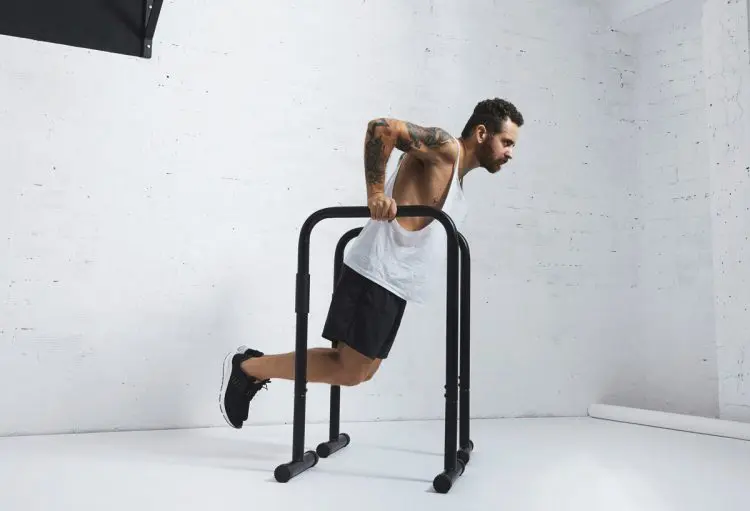
Learn how to do parallel bar dips here.
Knuckle Push-Ups – Wrapping Up
Knuckle push-ups are a traditional part of martial arts training. That makes a lot of sense because their main benefits (knuckle callouses, stronger wrists, etc.) could improve your punches.
However, for general exercisers, the advantages of knuckle push-ups over regular push-ups are very small. In fact, the potential risks may even outweigh the benefits. There are easier, safer ways to strengthen your wrists and forearms and increase your range of motion, such as using push-up handles.
That said, knuckle push-ups are a legitimate push-up variation, and providing you have strong, stable wrists and don’t mind a little knuckle pain, they’re certainly not a bad exercise.
But, if you find knuckle push-ups uncomfortable, there are plenty of exercises you can do instead. Knuckle push-ups are NOT compulsory!
References:
1. ESPN: Kevin Love Discusses Hand Injury
Interested in measuring your progress? Check out our strength standards for Bench Press, Push Ups, Squat, and more.




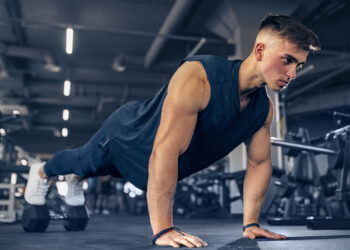
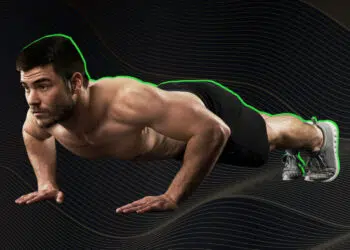
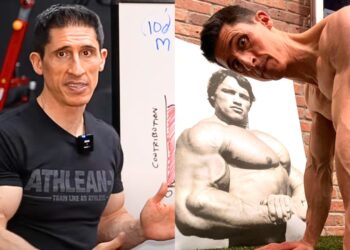


Do you know of any problems doing knuckle pushups particularly regarding arthritis.
My brother-in-law, a karate-instructor reccomends them while my doctor says they will cause more harm than good.
Hi Peter – thanks for your question.
I think it’s a question of risks vs. benefits. Knuckle push-ups are a staple of karate and other martial arts which is probably why your brother-in-law recommends them. I did hundreds of them when I studied karate; we did them to harden our knuckles and improve punching power. But, I also see your doctor’s point of view – they put a lot of stress on your joints in what is quite an unnatural position. After all, if you put your hands on the floor, your first instinct is probably to put your palms flat.
Ultimately, you need to decide if knuckle push-ups offer any benefits to you. If you just do push-ups for fitness, then they’re probably not worth the extra risk of injury. But, if you are involved in martial arts, they may be helpful. It’s also worth noting you can mimic the wrist position but without putting weight on your knuckles by using push-up bars, which maybe a good compromise.
Hope that helps!